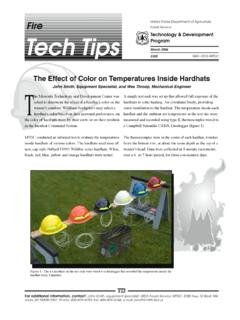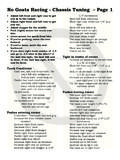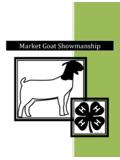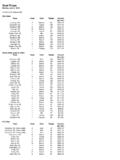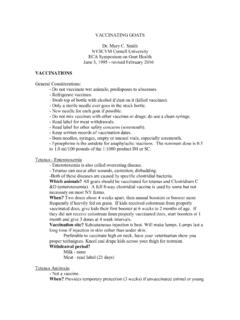Transcription of Recent Perspectives in Using Goats for Vegetation ...
1 J. Dairy Sci. 84(E. Suppl.):E170-E176 The American Dairy Science Association, 2001. Vol. 84, E. Suppl., 2001 E170 Recent Perspectives in Using Goats for Vegetation management in the USA1 Hart E (Kika) de la Garza Institute for goat Research Langston University Langston, OK 73050 ABSTRACT Although an ever-increasing body of research data has documented the usefulness of Goats for controlling brushy and weedy species such as shinnery oak, blackjack, and post oak, leafy spurge, sericea lespedeza, and many other species, this technique remains severely underutilized. Environmental con-cerns and the increased costs of chemical and mechanical con-trol methods provide greater opportunities to utilize biological control methods such as Goats for removal of brush and weeds. Goats have an advantage over other biological control meth-ods in that they can profitably convert brush and weeds into a saleable product and they can graze concurrently with cattle.
2 In addition, Goats improve the cycling of plant nutrients se-questered in brush and weeds, enabling the reestablishment of grassy species. The foremost limitation to Using Goats for brush and weed control is the social stigma cattlemen attached to Goats . The lack of an infrastructure (animal markets, source of large numbers of adapted animals, producer experience and knowledge base) to support goat enterprises is a serious con-straint which is gradually being overcome as the goat industry expands. Suitable goat production systems need to be devel-oped for specific environments. This involves the modification of existing knowledge, especially in regard to kidding date, parasite management , predator control, fencing, and marketing strategy. The lack of economic data and enterprise budgets also are constraints. Further research is needed to collect eco-nomic data and to develop stocking rate criteria and produc-tion systems to support the use of Goats for biological weed and brush control in a diversity of environments.
3 (Key words: goat , weed control, brush control, weed utiliza-tion) INTRODUCTION Overview of Vegetation management Goats have been used for Vegetation management in the United States for over a hundred years (Taylor, 1992), and their use for this purpose is expected to expand dramatically in the near future. This is because Vegetation management prob-lems will continue to increase in the near future as a conse-quence of environment degradation created by past systems of farming and grazing, and the increased expense of Using con-ventional methods of Vegetation control. Goats have a unique ability to convert unwanted Vegetation into a saleable product at a profit while providing control. Although it is a challenge to get life-long cattlemen to accept Goats , the economic pres-sures and visual successes from field demonstrations provide considerable motivation.
4 The unprecedented changes under-way in the goat world during the last two decades have paved the way for goat production to become widespread. The An-gora goat boom in the mid and late 1980s moved Goats from Texas into adjacent states. The dramatic influx of the Boer goat further increased the number of states with significant numbers of Goats and goat producers, especially in the South. Because these animals were expensive, more veterinarians became familiar with Goats and more equipment and technical knowledge about Goats became available. While it is exciting to see the spread of Goats throughout the United States, these changes have created a need for more technology that is spe-cifically applicable to these new goat environments. Now that Goats have become more widely distributed in the United States, producers are beginning to discover their usefulness for Vegetation management in many different ecosystems.
5 There is a need to further develop the technology of Using Goats to manage Vegetation in these many different ecosystems. To summarize, Goats , and the technology to use Goats for vegeta-tion management is no longer confined to Texas. Why do we want to manage Vegetation ? The most com-mon reason given by producers is to grow more grass to pro-duce more beef. And often we can enhance the productivity of degraded range sites. The Army Corps of Engineers may want to improve the wildlife habitat for deer or other species. A ranch manager desires to increase biodiversity and stability of his native range. Government agencies have an obligation to reduce the fire hazard associated with the accumulation of woody biomass especially in and adjacent to residential areas. Utility companies need to control woody species along their right of ways before they grow into large trees which are ex-pensive to remove.
6 Additionally, some form of Vegetation management may be used as a pretreatment for chemical treatment or burning. There are a number of invasive plant species that have been introduced without their natural control media, such as insects or disease, that it is in public interest to prevent their spread. Unfortunately, Vegetation management is not as simple as taking a plant out of the wrong place. Often, underlying prob-lems or conditions have encouraged that plant to grow in the wrong place. One of the greatest factors is erosion in Okla-homa, much of the grassland is go-back land land that was once cultivated, but has productivity that is too low to be cul-tivated profitably, usually due to the loss of over half of the topsoil while it was cultivated (Mark Moseley, Natural Re-Received October 20, 2000. Accepted December 18, 2000. 1 Appreciation is expressed to J.)
7 E. Huston for suggestions and discussions during the preparation of this manuscript. HART Vol. 84, E. Suppl., 2001 E171 sources Conservation Service). Most of the soil s plant nutri-ents and OM that were contained in the top several inches of the topsoil were lost, severely diminishing productivity of the soil and the vigor of grasses growing on it. Water infiltration rate is reduced and a greater proportion of infiltrated water is in the subsoil. Because woody species have deeper roots to obtain water and are good at sequestering plant nutrients, they are much more competitive against the grass in eroded areas than in the former uneroded state. This change is basically a permanent one. This phenomena was modeled by Walker et al. (1981) who showed that reduced water infiltration resulted in a shift to woody Vegetation that was permanent, , reducing grazing intensity would never restore the grass component of the system.
8 The loss of productivity potential of the soil limits the expenditures that can be made for managing Vegetation . The second factor is overgrazing, which causes erosion, re-duced water infiltration, and reduced the vigor of grass species enabling undesirable plant species to better compete with na-tive grasses. A third factor has been grazing by one species, usually cattle, which graze only a few plant species. Grazed plants, especially overgrazed plants, are at a competitive dis-advantage to ungrazed species because of the loss of signifi-cant photosynthate from the plant. The exclusion of fire by man has also exacerbated Vegetation problems, especially from woody species (Scifres, 1980). Producers have only a few options available for vegeta-tion management . These include fire, mechanical, chemical and animal impact. Fire is an economical and effective tool for controlling many types of Vegetation (Powell, et al.)
9 , 1979). However, many woody species sprout from the roots or come back from seed. Fire may be an effective pretreatment for Goats , especially where trees are over 3 m tall. Fire can be dangerous physically and politically when it escapes, as oc-curred recently in the Cerro Grande fire in New Mexico at Bandolier National Monument, burning 45,000 acres, destroy-ing 235 homes and many other structures, and causing the evacuation of 18,000 people. Mechanical methods of vegeta-tion management include rollerchopping, root plowing, bull-dozing, chaining or cabling, and mowing. Most of these meth-ods are too expensive; although dramatic results are quickly achieved, the benefits are usually short lived. Chemical con-trol of weeds has been effective in the past, but increased ex-pense for getting chemicals registered has significantly in-creased the cost of chemicals.
10 The cost of chemicals and ap-plication requires that land have high productivity potential to recoup costs. In addition, chemicals may kill desirable plants (Allan and Holst, 1996). J. Mayo (personal communication) observed that when forbs in native range were killed, such as may happen with chemical treatment, productivity the next 2 yr reduced by 20 to 30%, presumably due to the loss of nitro-gen fixing forbs. Animal impact involves control of grazing animal species, time of year of grazing, duration of grazing, and length of rest period of the paddock. The problem of overgrazing has been addressed previously. Grazing manage-ment can be an effective factor in control of Vegetation , but the required level of management is often unavailable. Overview of Goats for Vegetation management What are characteristics of Goats that make them espe-cially suitable as Vegetation management tools?







